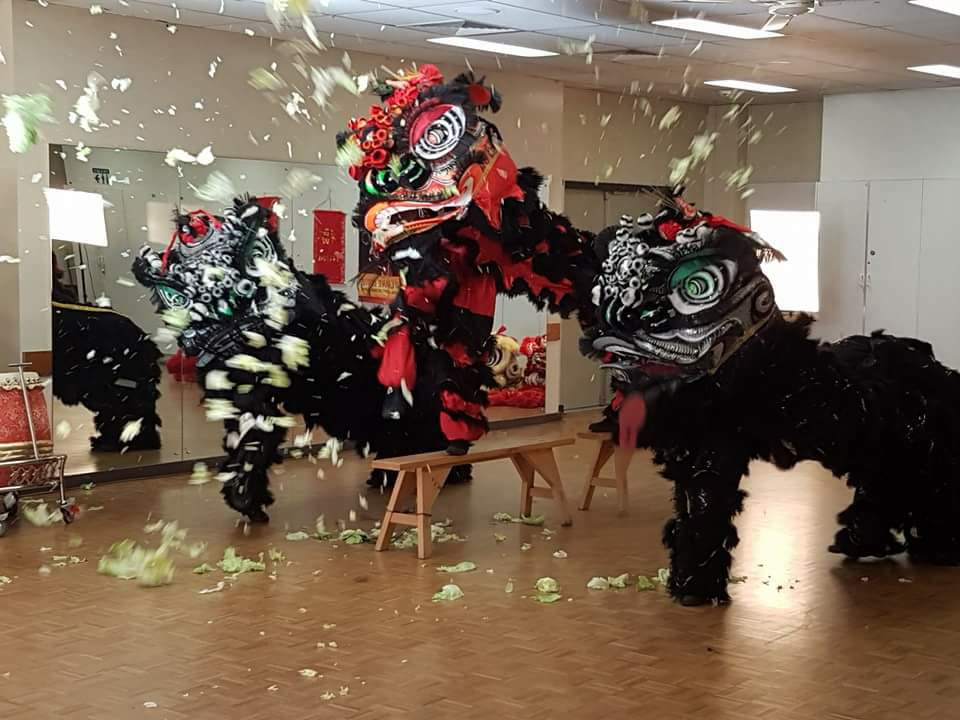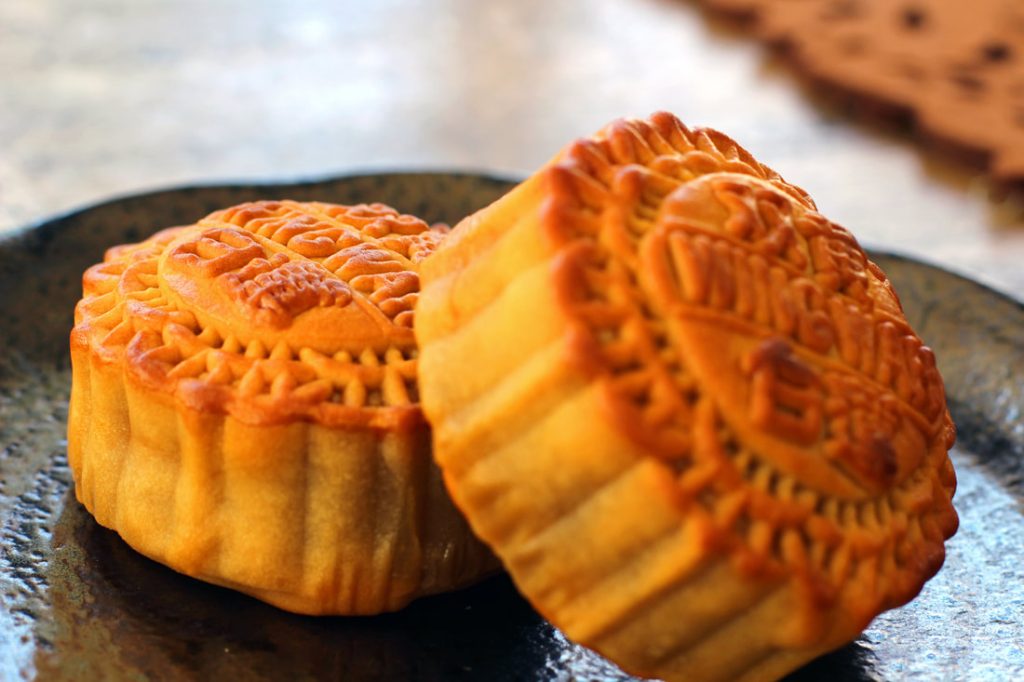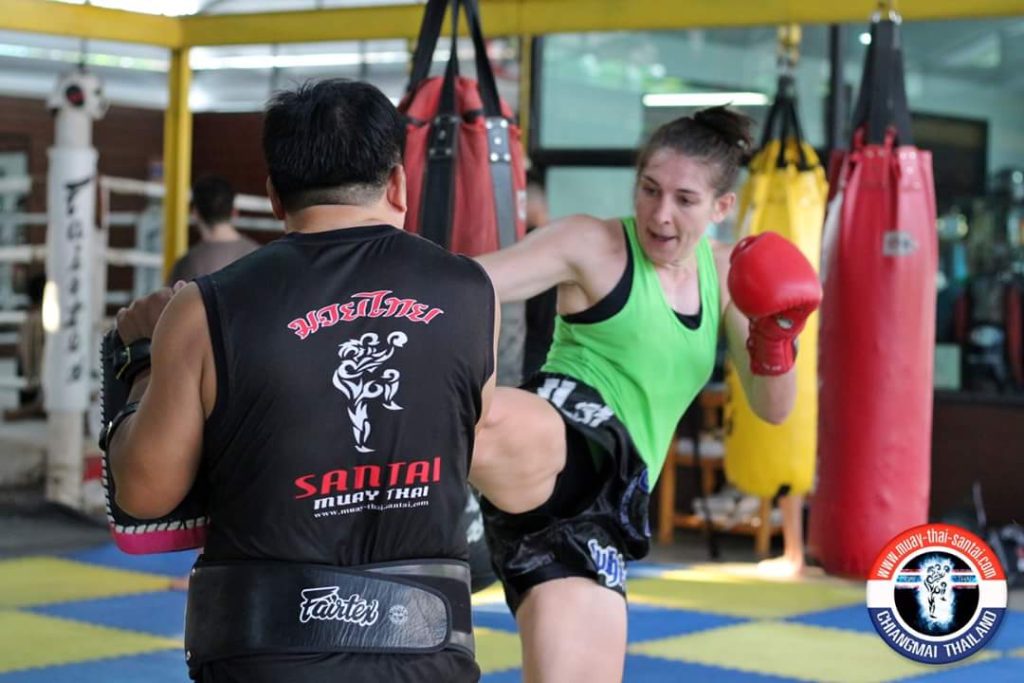With a growing world population, insects are now looked into as a potential sustainable food source with low environmental impact….. However although considered taboo in the West, eating insects has been embraced by many cultures and has a long history. While considered revolutionary in the West, it is fairly common place in other cultures. Insects are known to be eaten in 80% of the world’s nations.
Insect eating is seen today as the new on trend subject. With a growing world population, insects are now looked into as a potential sustainable food source with low environmental impact.
By 2050 the population could possibly reach 9 billion people. To feed all of those mouths, we will need to produce almost twice as much food as we currently do.
Consuming insects as opposed to livestock is seen to be a more environmentally friendly strategy. Insects (being cold-blooded) require less energy to maintain their body temperature which means they are highly efficient at converting feed into body mass.
Crickets require around 2 kg of feed to produce 1 kg of meat, and around 80% is edible. Cattle, on the other hand, require 8 kg to produce the same amount of meat, but only 40% of the cow can be consumed
They are also surprisingly nutritious, with crickets considered a complete protein comparable with protein from soybeans.
With this view to the future, some companies are trying to introduce insects as food into Western diets with products which disguise their true nature (eg. insect flour or protein bars). However eating insects has been embraced by many diverse cultures and has a long history. While considered revolutionary in the West, it is fairly common place elsewhere. Insects are known to be eaten in 80% of the world’s nations.
In Thailand, certain insects are regularly consumed, especially in northern provinces.
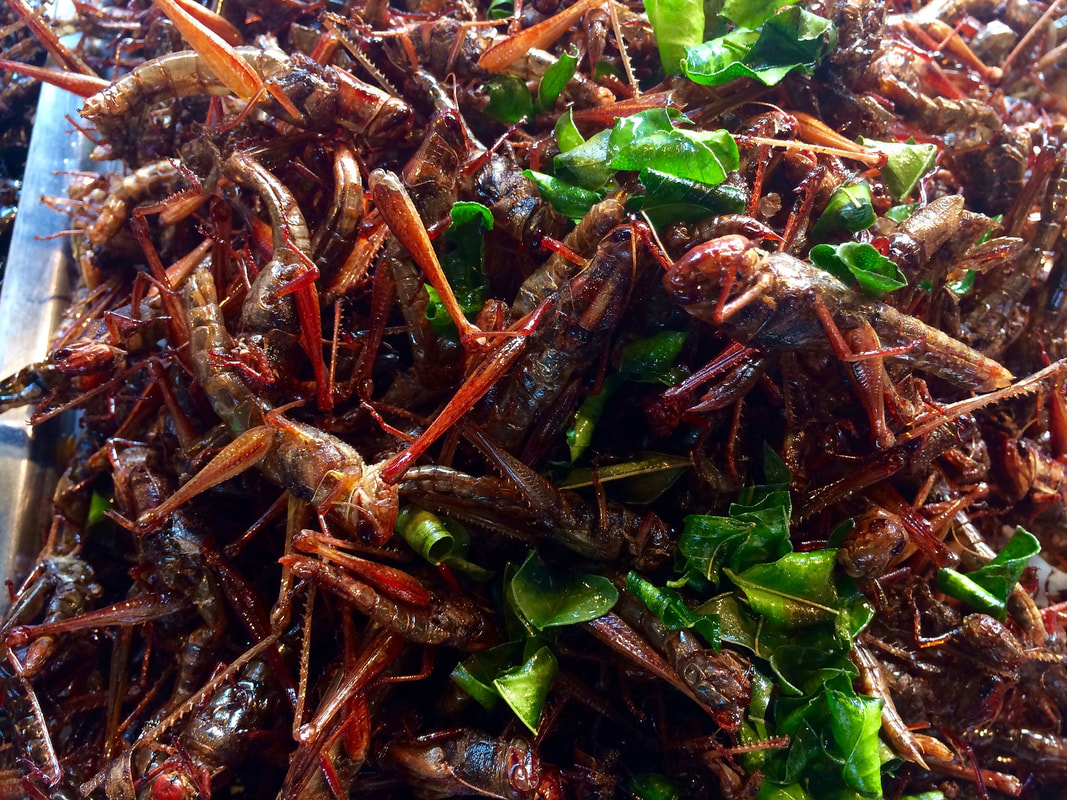
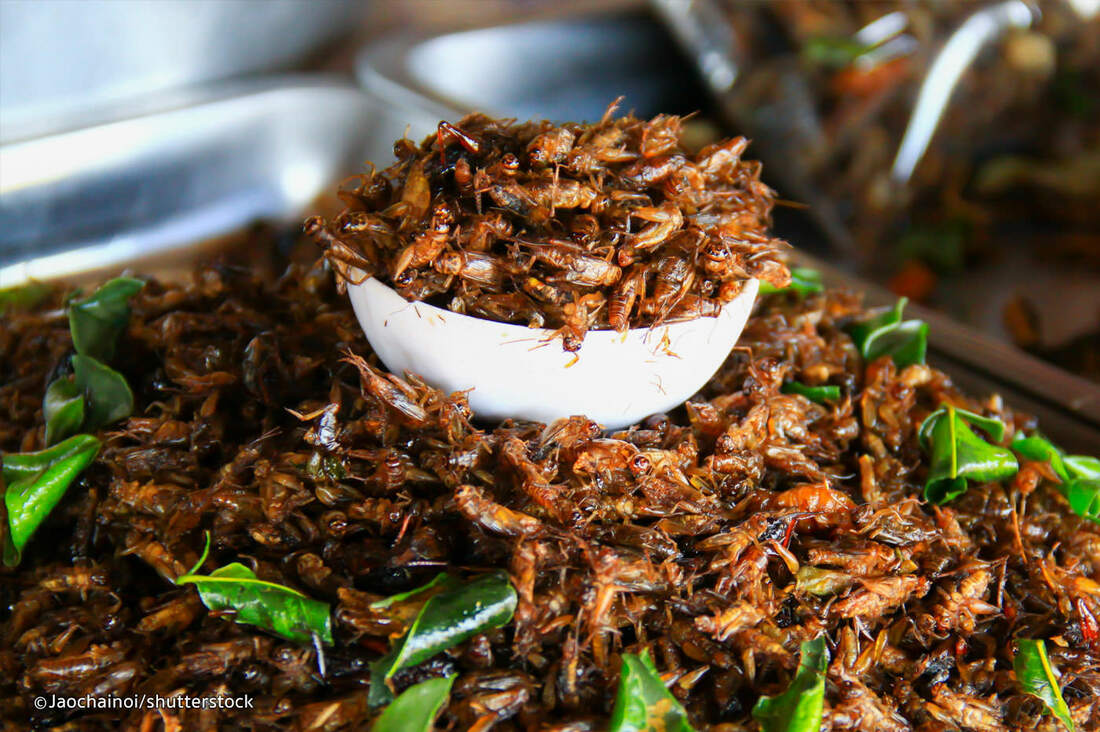
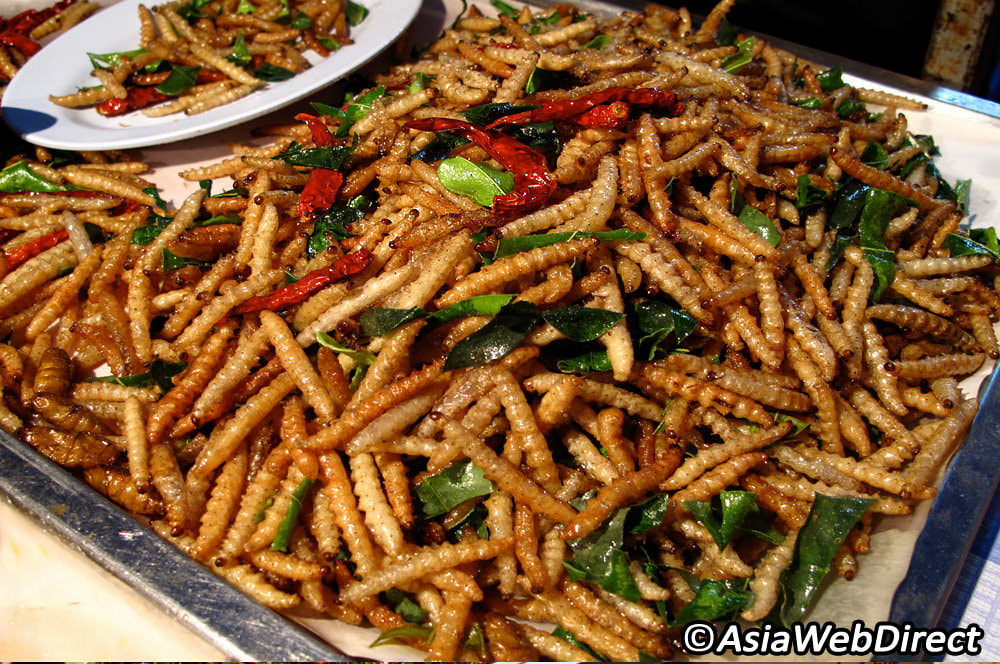
|
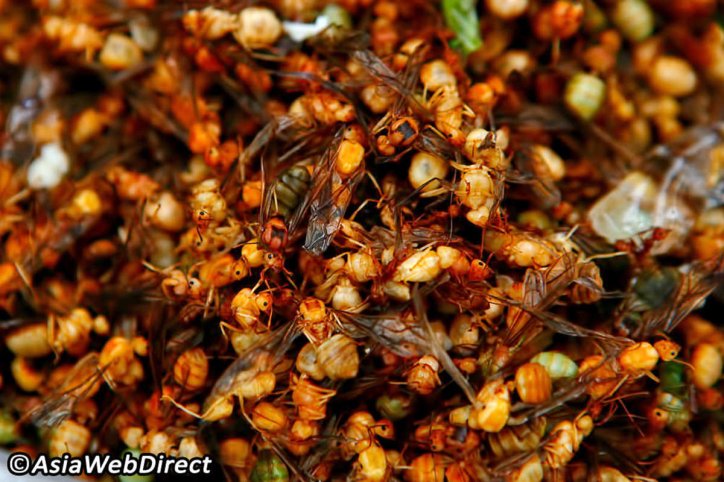 |
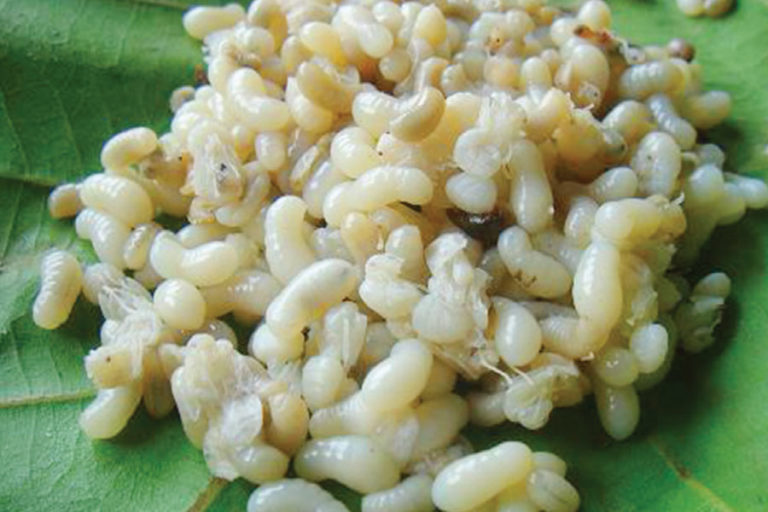 |
Mot daeng, in both egg and adult form, are among the most prized edible insects in Thailand due to their pleasant flavor, richness, and said curative properties. They are rich in proteins, sugars, vitamins, mineral salts, and anti-inflammatories. They are highly prized and expensive, which makes them an important part of regional economies.
While most often collected from wild tree trunks, these ants are increasingly being farmed in home gardens. They are collected once a year during the dry season when the ant nests are full of eggs, larvae, and pupae. Bamboo sticks with bags attached to the ends are used for harvest: A hole is poked into the nest, which is then shaken, dropping larvae and pupae into the bag. The bag is emptied into a basket with rice flour applied to the inside, which prevents the ants from crawling up the walls to escape.
Best eaten by the spoonful, because of their small size, they have a soft, slightly chewy texture, kind of like cold rice. The eggs (kai mod daeng) have the general appearance of rice, with the same soft and faintly chewy texture as the adult ants. The taste is noticeably different, with a sour edge to it.
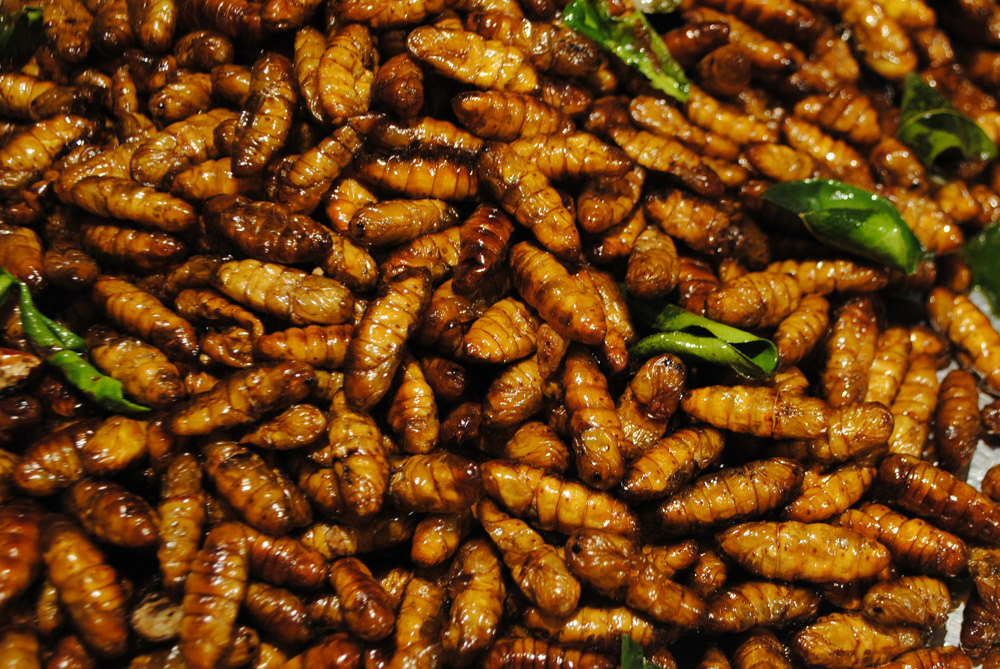
Due to thousands of years of selective breeding, the silkworms we know today are no longer suited to survive in the wild. The entire species’ population exists only in silk factories and in the cardboard boxes of school children. So, except for the fortunate few 3rd-grade bookworms, virtually every silkworm will meet the cooking pot…. This logic presumes that if they weren’t eaten, they would become a waste product – The Guardian
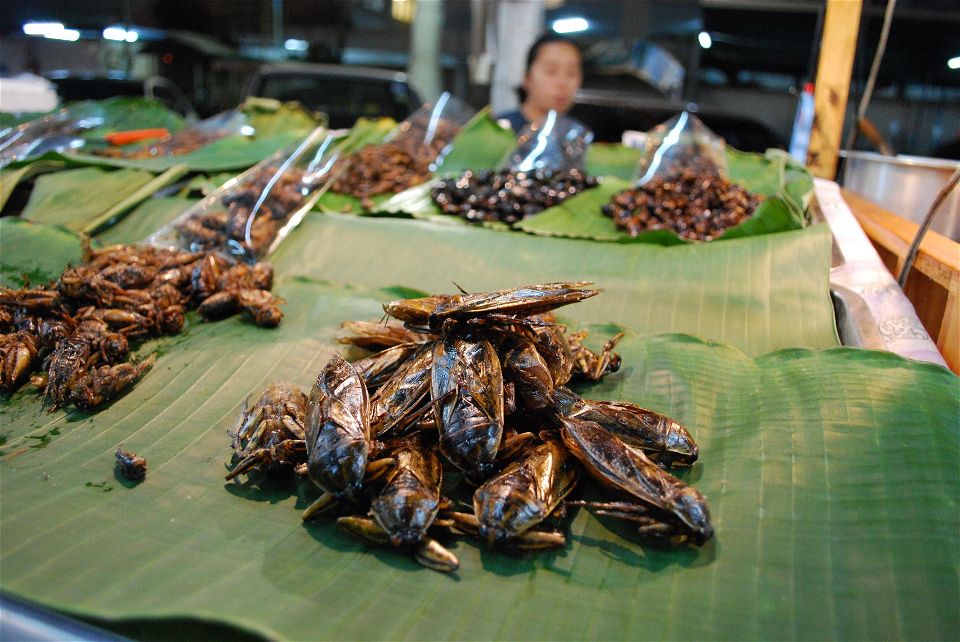
Giant water bugs in Thailand are known as mang da (แมงดา). and are truly aquatic. Except for the occasional mating flight, their lives are spent submerged in fresh water where they use the siphon in their tail in a “snorkel fashion” thrusting it up to the surface to enable under water breathing.
In their natural habitat, they are fierce predators and prey on small fish, amphibians and crustaceans. The giant water bug snatches its prey with its front legs and injects a powerful toxin which breaks down the internal mass of it’s victim. They can and will bite people, and are said to deliver a burning pain (are often referred to as “toe biters” for their propensity to attack swimmers).
Giant water bugs have a highly distinct flavor that is reminiscent of black licorice or anise. The body is a bit juicy, and to me it tastes a bit like scrambled eggs, while the head tastes more like sour mushy crab- Migrationology
The female giant water bug is usually eaten as a snack in Thailand, the male giant water bug is favoured as an additive to Nam Pla Mang Da and Nam Prik Mang Da because of it’s unique “sweet” aroma produced by the pheromones it uses to attract a mate.
Probably the biggest bug you’re going to find on offer, it is undoubtedly the hardest to eat. You need to first pull off the hard outer wings then dig into the meat of the body and head.
References
https://www.iflscience.com/environment/will-we-all-be-eating-insects-50-years/
https://en.wikipedia.org/wiki/Entomophagy
http://www.phuket.com/magazine/eating-insects.htm
https://www.pattayaunlimited.com/giant-thai-bug-delicacy/
http://www.bugsfeed.com/silkworm
https://migrationology.com/how-to-eat-scary-insects-worms-and-bugs-in-thailand/
https://www.tripzilla.com/bizarre-thai-foods/19409
https://www.thaitable.com/thailand/travel/fried-bugs
https://www.thai.lt/thai-food/thai-food-blog/231-a-guide-to-thai-taste-eating-insects-in-thailand
https://www.fondazioneslowfood.com/en/ark-of-taste-slow-food/mod-daeng-ant/



